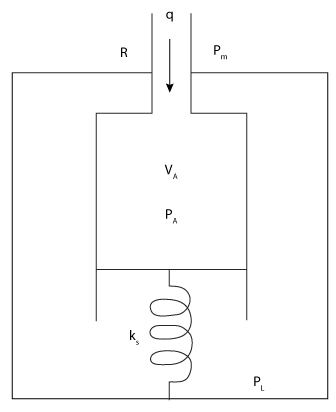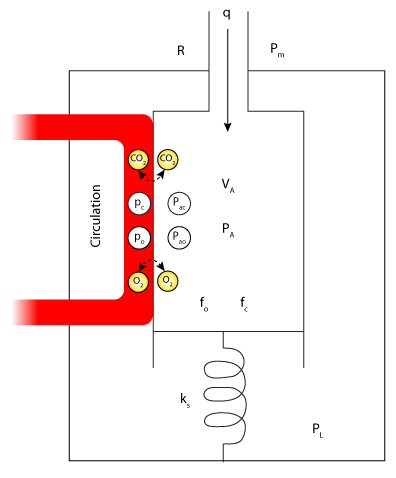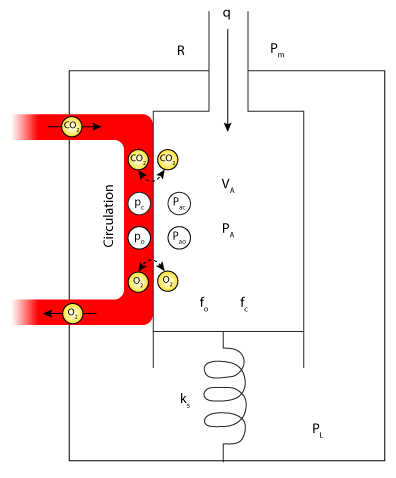Ben-Tal, 2006
Model Status
This CellML model runs in both PCEnv and COR to recreate the published results. The units have been checked and they are balanced. Please note that this particular version of the CellML model does not correspond with any one of the four possible models from the original publication. Rather it is a combination model, made up of equations 2,7,9,10,11,12,13,16, and 20.
Model Structure
ABSTRACT: This paper presents a hierarchy of models with increasing complexity for gas exchange in the human lungs. The models span from a single compartment, inflexible lung to a single compartment, flexible lung with pulmonary gas exchange. It is shown how the models are related to well-known models in the literature. A long-term purpose of this work is to study nonlinear phenomena seen in the cardio-respiratory system (for example, synchronization between ventilation rate and heart rate, and Cheyne-Stokes respiration). The models developed in this paper can be regarded as the controlled system (plant) and provide a mathematical framework to link between "molecular-level", and "systems-level" models. It is shown how changes in molecular level affect the alveolar partial pressure. Two assumptions that have previously been made are re-examined: (1) the hidden assumption that the air flow through the mouth is equal to the rate of volume change in the lungs, and, (2) the assumption that the process of oxygen binding to hemoglobin is near equilibrium. Conditions under which these assumptions are valid are studied. All the parameters in the models, except two, are physiologically realistic. Numerical results are consistent with published experimental observations.
 |
| Schematic diagram of inflexible lung model. The lung is modelled as a single, inflexible container. Pm represents the mouth pressure, PA is the alveolar pressure, air flow is represented by q, R is the resistance to air flow and V0 is the volume of the container. |
 |
| Schematic diagram of flexible lung model. The lung modelled as a single, flexible container. VA - total lung volume, Pm - mouth pressure, PL - pleural pressure, q - air flow, R - overall resistance of the conducting airways, ks - spring constant. |
 |
| Schematic diagram of flexible lung model with gas exchange. The lung modelled as a flexible container with gas exchange. All the symbols are the same as in the diagram above. In addition, fo and fc are the alveolar concentrations of oxygen and carbon dioxide respectively, and pao and pac are the alveolar partial pressures of oxygen and carbon dioxide respectively. po and pc are the blood partial pressures of oxygen and carbon dioxide respectively. |
 |
| Schematic diagram of flexible lung model with gas exchange and gas transport. The lung modelled as a flexible container with gas exchange and gas transport. With each heart beat a new compartment is pushed into the lung. Each compartment consists of a small container representing dissolved gas, and a large container representing the means by which oxygen and carbon dioxide are transported. |
The original paper reference is cited below:
Simplified models for gas exchange in the human lungs, Alona Ben-Tal, 2006. Journal of Theoretical Biology, 238(2), 474-495. PubMed ID: 16038941
